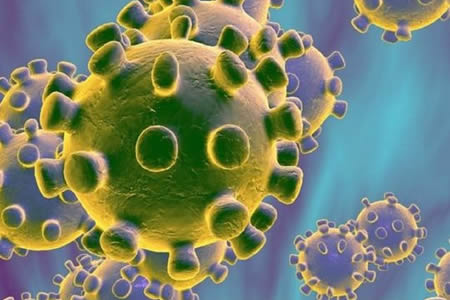A new type of diagnostic test to check for the presence of the SARS-CoV-2 virus has been developed that has several advantages over the PCR tests which are currently performed to diagnose COVID-19. The test is conducted like an alcohol breathalyzer using a device called The Bubbler, which can detect viral RNA in the breath of patients.
PCR tests rely on nasal and/or tonsil swabs, which many people find unpleasant. There is also a risk that the test will not produce a positive result if the swabs are not taken correctly, which is a risk if those samples are taken by patients at home. Further, standard PCR tests can produce a positive result up to 3 months after infection, long after the risk of infection has passed. They also do not measure the viral load, which is the degree to which a person is infectious. These issues are avoided with The Bubbler.
The Bubbler consists of a glass tube and glass pipette through which patients exhale. The breath passes through the glass tube which is filled with a reverse transcription reaction mixture and cold mineral oil. The Bubbler reverse transcribes the RNA from airborne virus particles into DNA, and the sample is then tested via PCR, but since it is not necessary to stabilize a sample, it may be possible for the tests to be conducted at home which could return a result much faster.
The DNA transcribed can be barcoded, tying the sample to a particular patient and those samples can be used for sequencing. The test can be used for simultaneous batches of pooled samples and can also identify the strain of SARS-CoV-2. Since Tthe Bubbler measures virus particles on the breath, it is far better at identifying the risk of contagion than standard PCR tests. The researchers said The Bubbler can also be adapted for environmental sampling, such as in hospitals and closed environments such as offices, planes, and ships.
The researchers tested The Bubbler between May 2020 and January 2021 by screening 70 patients who received treatment in Rhode Island Hospital’s emergency department and compared a 15-second breath sample using the Bubbler with standard nasal swab PCR tests and tongue scrapes.
The researchers said tests conducted using samples taken from swabs of the mouth are less likely to detect viral RNA than breath tests using The Bubbler, and The Bubbler was found to be more predictive of lower respiratory tract involvement than standard PCR tests. The results indicate The Bubbler is better at testing for active viral particles.
“The Bubbler is more likely to be a better indicator of current infection than nasopharyngeal swabs,” said William G. Fairbrother, PhD, professor in the department of molecular biology, cell biology and biochemistry at Brown University in Providence, RI, and lead investigator of the study. “Another advantage is the barcoding, which enables high-throughput RNA virus testing at a fraction of the cost of conventional testing. The barcode returns a viral sequence that also supports strain identification, which may prove useful as more information is learned about transmissibility and possible strain-specific treatment decisions.”
You can read more about the study in the paper – Efficient Detection of Severe Acute Respiratory Syndrome Coronavirus 2 (SARS-CoV-2) from Exhaled Breath – which was recently published in the Journal of Molecular Diagnostics. DOI: 10.1016/j.jmoldx.2021.09.005
